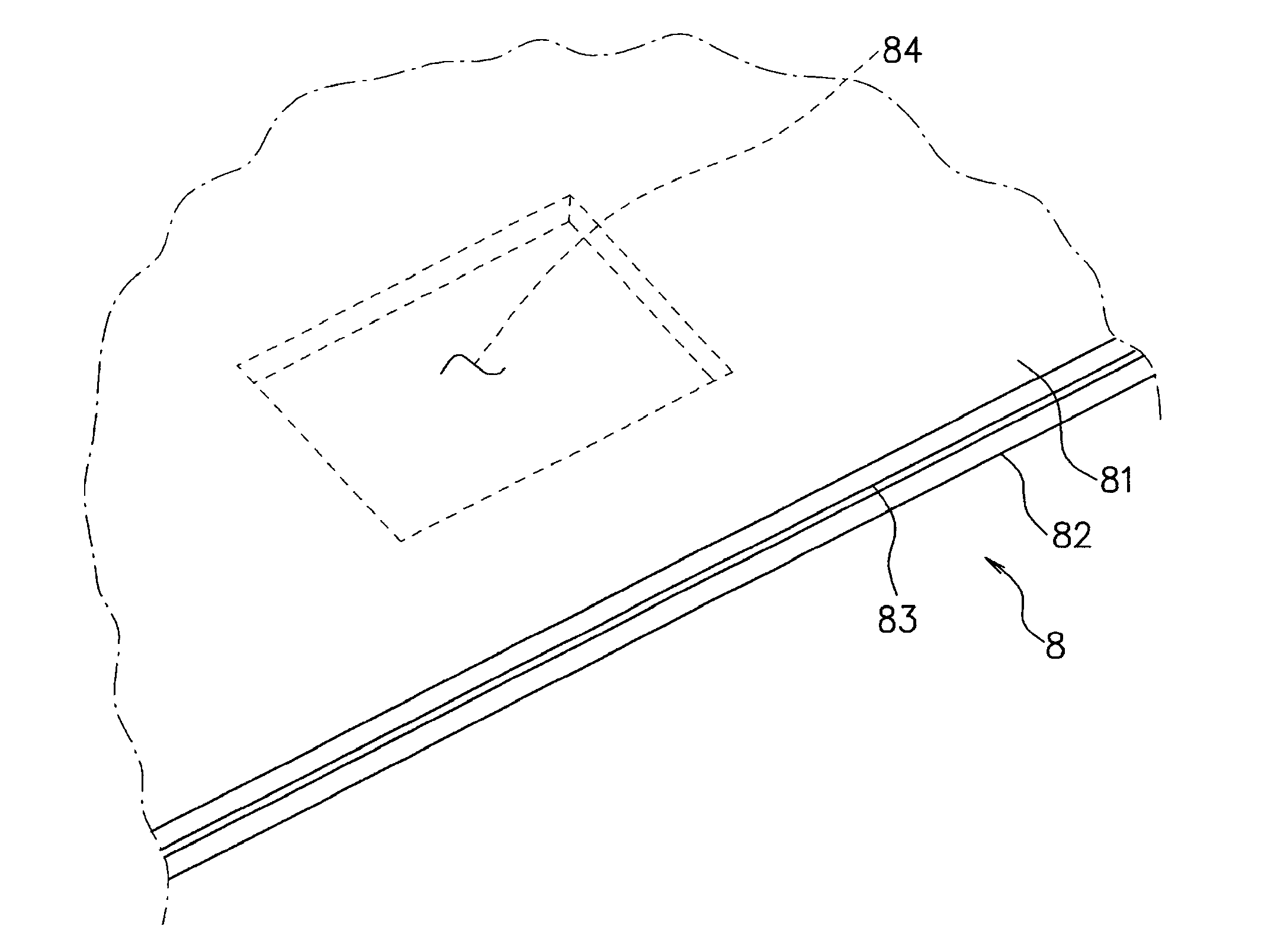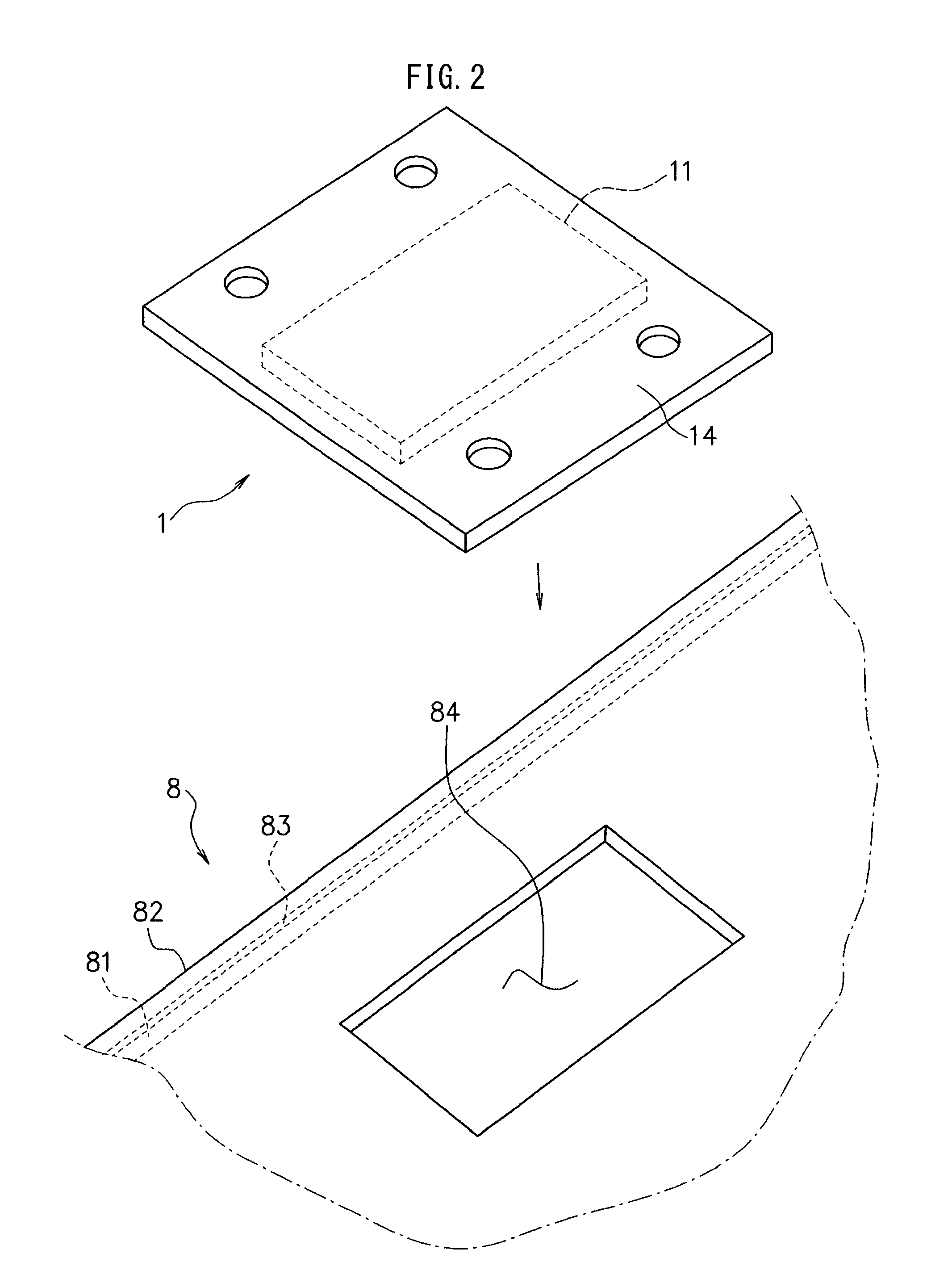Corrosive environment sensor and method for measuring corrosive environment
- Summary
- Abstract
- Description
- Claims
- Application Information
AI Technical Summary
Benefits of technology
Problems solved by technology
Method used
Image
Examples
working example
[0040]A description is now given of a measurement example (working example) of the corrosive environment with use of the corrosive environment sensor 1 of the present invention in comparison to measurement examples (comparative examples 1 and 2) of the corrosive environment with use of conventional corrosive environment sensors 91 and 92 with reference to FIG. 4 and FIG. 5. The corrosive environment sensor 1 and the conventional corrosive environment sensors 91 and 92 were attached to a front member 6 of an automobile, and the automobile was driven in the rain to measure a galvanic current. FIG. 4 is a cross sectional view for schematically showing the mounting configuration of the corrosive environment sensor 1 and the conventional corrosive environment sensors 91 and 92 to the front member 6. FIG. 5 is a graph view showing measurement results of galvanic current with use of the corrosive environment sensor 1 and the conventional corrosive environment sensors 91 and 92. One convent...
PUM
 Login to View More
Login to View More Abstract
Description
Claims
Application Information
 Login to View More
Login to View More - R&D
- Intellectual Property
- Life Sciences
- Materials
- Tech Scout
- Unparalleled Data Quality
- Higher Quality Content
- 60% Fewer Hallucinations
Browse by: Latest US Patents, China's latest patents, Technical Efficacy Thesaurus, Application Domain, Technology Topic, Popular Technical Reports.
© 2025 PatSnap. All rights reserved.Legal|Privacy policy|Modern Slavery Act Transparency Statement|Sitemap|About US| Contact US: help@patsnap.com



